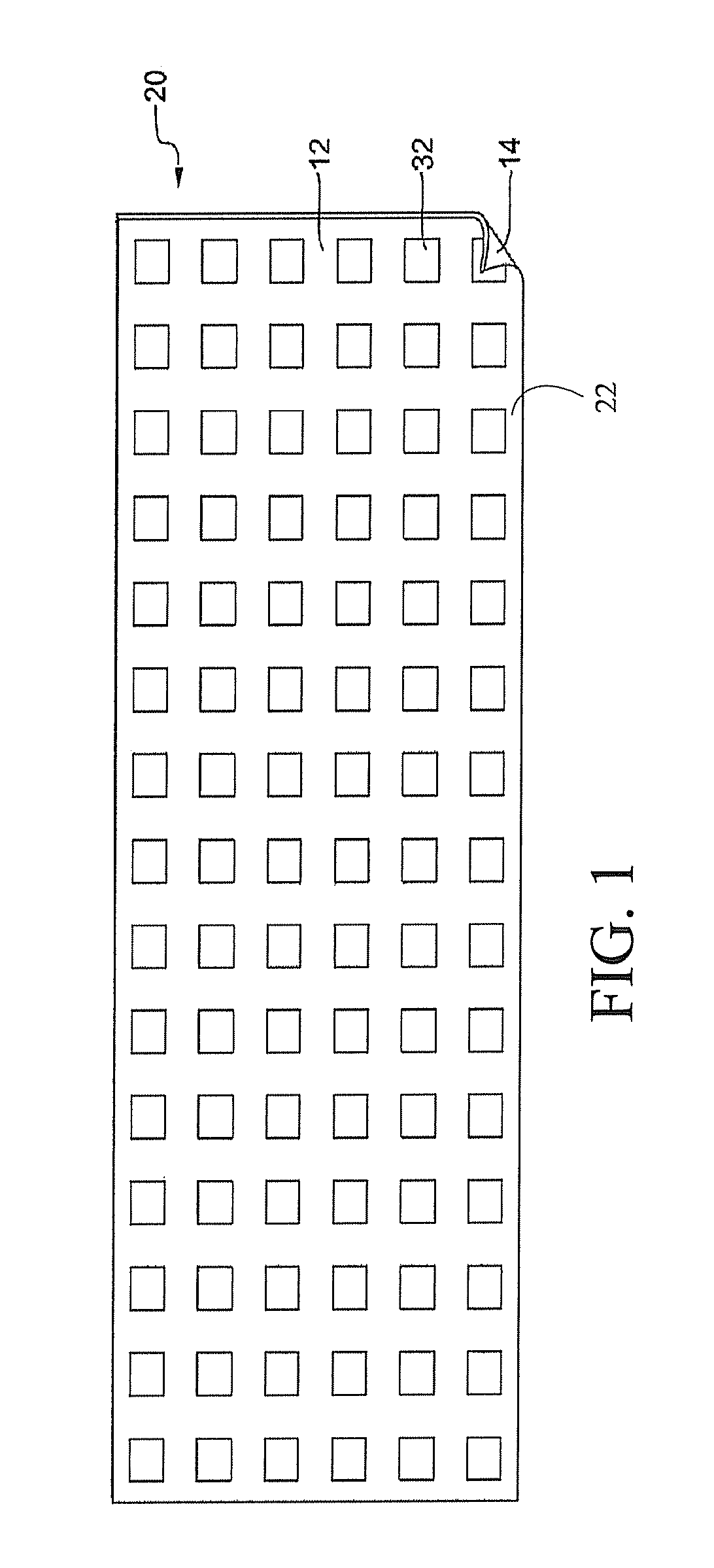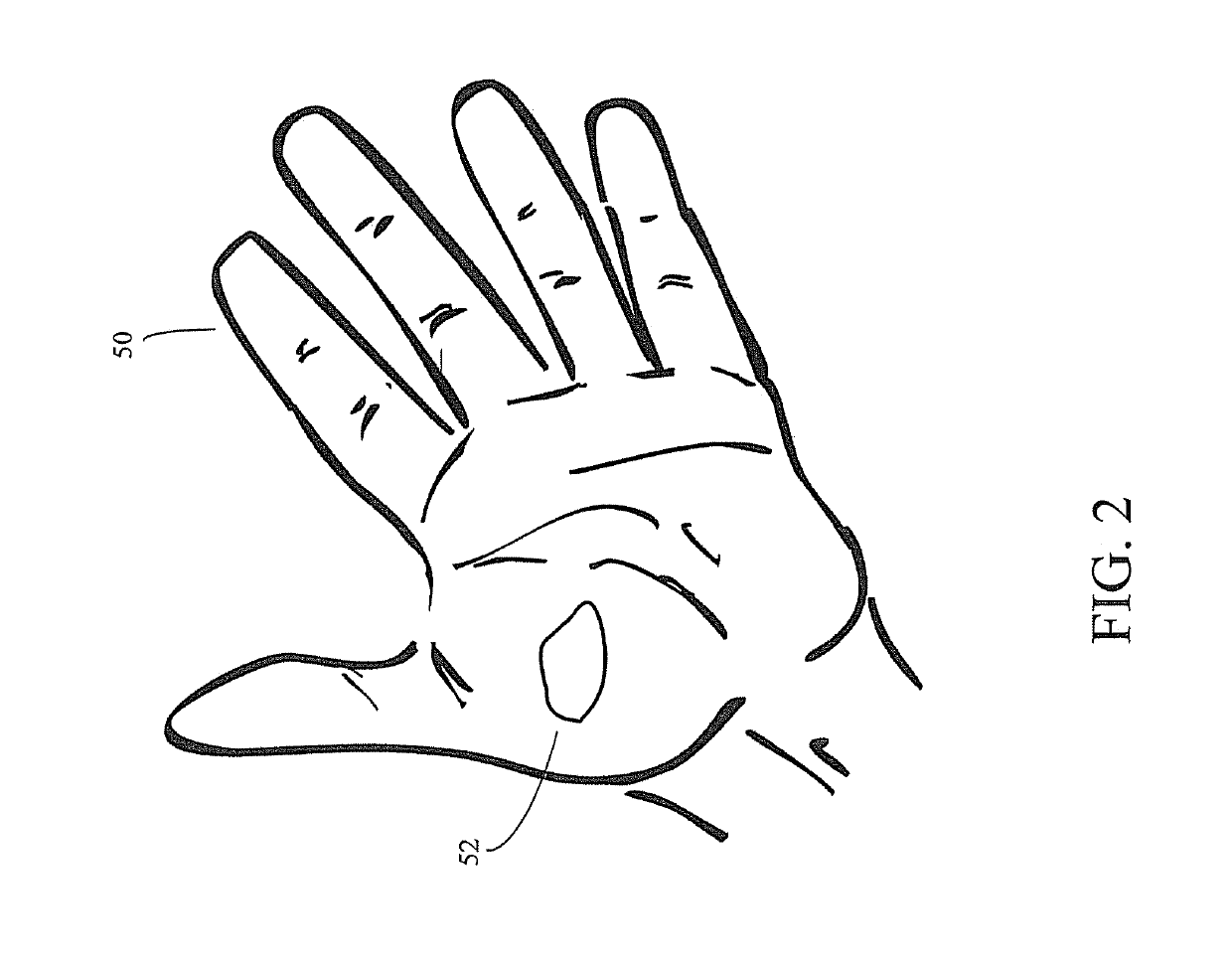Expandable amnion membrane for treating non-healing wounds
a technology of amnion membrane and wound healing, which is applied in the field of expanding amnion membrane for treating non-healing wounds, can solve the problems of non-healing chronic wound formation, affecting the clinical applicability of stem cells derived from adults or developing embryos, and affecting the healing process of wounds, so as to reduce amniotic material, prevent microbial infection, and increase the capacity of the membrane to expand.
- Summary
- Abstract
- Description
- Claims
- Application Information
AI Technical Summary
Benefits of technology
Problems solved by technology
Method used
Image
Examples
Embodiment Construction
[0021]FIG. 1 depicts an expandable, porous placental membrane material 20 that is prepared from a placental membrane as described in U.S. patent application Ser. Nos. 13 / 250,096 and 13 / 647,525, the contents of which are herein incorporated by reference in their entirety. Placental membrane material 20 is processed in a manner that allows it to exhibit expansion ratios of up to 6:1 or more including 2:1, 3:1, 4:1 and 5:1, thereby allowing the material to cover up to six times the treatment area than the original placental membrane. This is accomplished by forming a plurality of openings through the original placental membrane and imparting to the membrane a mesh-like pattern. The resulting expandable, porous placental membrane material 20 enables material 20 to stretch along its length and width thereby increasing the perimeter of material 20 and the amount of surface area it can cover when placed on or in a wound, burn or the like.
[0022]Referring again to FIG. 1, placental membrane ...
PUM
| Property | Measurement | Unit |
|---|---|---|
| volume | aaaaa | aaaaa |
| area | aaaaa | aaaaa |
| movement | aaaaa | aaaaa |
Abstract
Description
Claims
Application Information
 Login to View More
Login to View More - R&D
- Intellectual Property
- Life Sciences
- Materials
- Tech Scout
- Unparalleled Data Quality
- Higher Quality Content
- 60% Fewer Hallucinations
Browse by: Latest US Patents, China's latest patents, Technical Efficacy Thesaurus, Application Domain, Technology Topic, Popular Technical Reports.
© 2025 PatSnap. All rights reserved.Legal|Privacy policy|Modern Slavery Act Transparency Statement|Sitemap|About US| Contact US: help@patsnap.com



